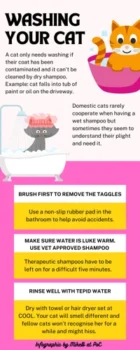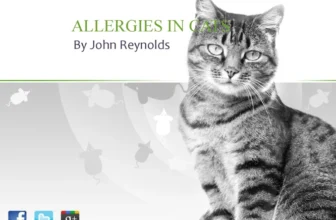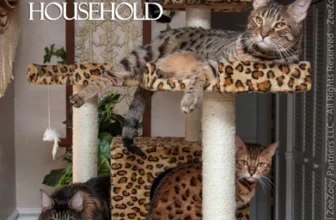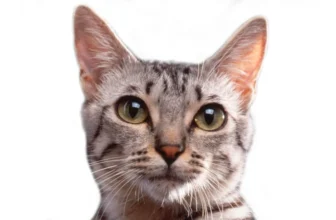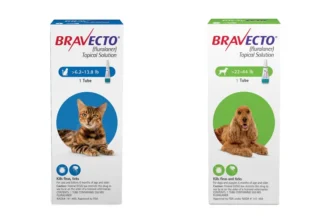As fur parents, we always strive to keep our furry friends healthy and happy. However, dental health is often overlooked when it comes to cat care. Did you know that dental disease is one of the most common health issues among cats? This is particularly important for California Spangled cats, as they are prone to developing dental problems. But don’t worry, taking care of your cat’s teeth and gums isn’t as daunting as it may seem. In this article, we will provide you with step-by-step tips and tricks to ensure your California Spangled cat’s dental health stays in top shape.
Why Dental Health is Vital for Your California Spangled Cat
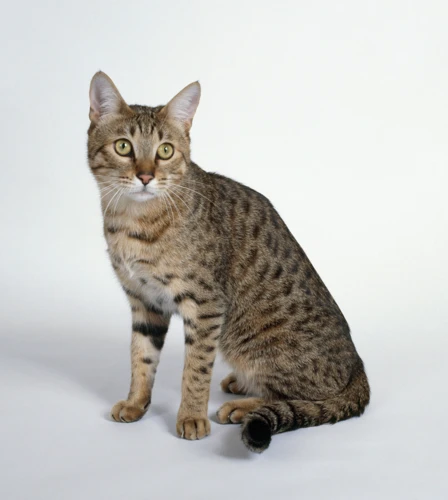
When it comes to maintaining your California Spangled Cat’s overall health, their dental hygiene is just as important as other aspects such as regular vet checkups, parasite prevention, preventing obesity through a healthy diet and exercise, and flea and tick prevention. Oral health issues, if left unaddressed, can lead to serious health complications that will not only be painful for your beloved pet but can also pose a threat to their longevity. So, it is essential to prioritize your cat’s dental health and take all necessary steps to keep their teeth and gums healthy and strong. In this article, we will explain why dental health is crucial for your California Spangled Cat and provide tips for keeping their teeth and gums in tip-top shape.
Preventing Dental Disease
Preventing Dental Disease is crucial to maintaining a California Spangled Cat’s overall health and wellbeing. Regular dental care can help prevent a host of dental problems that can cause pain, discomfort, and even lead to serious health issues.
Here are some tips to prevent dental disease in your California Spangled Cat:
- Teach your cat to tolerate daily tooth brushing: By starting early and consistently, it is possible to train your cat to tolerate a daily tooth brushing routine. Use a specially designed toothbrush and toothpaste that is specifically formulated for cats. Never use human toothpaste as it can be toxic to cats.
- Provide dental chews and toys: Chewing can help remove tartar and plaque buildup on your cat’s teeth. Choose dental chews and toys that are specifically designed for cats and have been approved by veterinarians.
- Feed a nutritious diet: A balanced and nutritious diet can help improve dental health by preventing tartar and plaque buildup. Avoid feeding your cat table scraps and choose high-quality cat food.
- Schedule regular checkups: Regular checkups with a veterinarian are essential for maintaining your cat’s dental health. Your veterinarian can perform a thorough dental exam and recommend appropriate preventive measures to keep your cat’s teeth healthy.
Regular preventive measures can help reduce the risk of developing dental problems such as periodontal disease, gingivitis, and tooth decay. Taking steps to prevent dental disease can help ensure that your furry friend stays happy and healthy for years to come.
Remember: Prevention is key! Don’t wait until a dental issue arises before taking action. By incorporating these simple preventive measures into your California Spangled Cat’s daily routine, you can help protect their dental health and overall wellbeing.
If you need more information on regular checkups, read our article on the importance of vet checkups for your California Spangled Cat.
Impact of Dental Disease on Your Cat’s Health
Dental disease in California Spangled cats can have a significant impact on their overall health. When left untreated, it can lead to serious complications that can even be life-threatening. Below are some of the effects that dental disease can have on your feline friend’s health:
- Pain and Discomfort: Just like humans, dental problems can cause pain and discomfort for cats. Toothaches and gum inflammation can make it difficult for them to eat and drink, leading to malnutrition, dehydration, and weight loss.
- Bad Breath: Foul breath can be a sign of dental disease, and it may be unpleasant to be around your cat when they have this issue. It can also be a symptom of more severe dental issues that require immediate attention.
- Infection and Decay: Dental disease can cause infection and decay in your cat’s mouth. Left unchecked, these issues can lead to tooth loss and even damage to other organs as infection spreads.
- Parafunctional Habits: Cats with dental problems may develop parafunctional habits such as chewing on objects or pawing at their mouths in an attempt to alleviate discomfort.
It’s essential to keep tabs on your California Spangled’s dental health to avoid any of these consequences. This can be achieved through regular home maintenance and check-ups with your veterinarian. In addition to dental disease, there are other health conditions that your feline friend can face, such as parasites and obesity. It’s essential to educate yourself on how to prevent these conditions by visiting these links: cali-spangled-cat-parasite-prevention, prevent-obesity-california-spangled-cats-diet-exercise, and cali-spangled-cat-flea-tick-prevention.
Regular Home Maintenance to Improve Dental Health
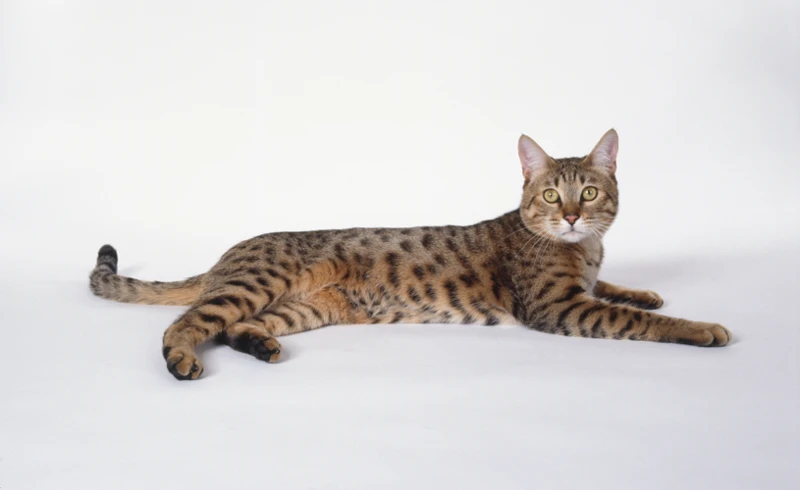
Maintaining your California Spangled cat’s dental health is crucial for their overall well-being. Implementing regular home maintenance techniques can improve your cat’s oral hygiene and prevent the onset of dental diseases. In this section, we’ll uncover some simple yet effective ways to keep your feline friend’s teeth and gums healthy. Let’s explore some daily routines, diet alterations and necessary check-ups that can make a significant impact in your cat’s dental care.
Daily Brushing Routine
Maintaining your California Spangled cat’s dental health involves establishing a consistent daily brushing routine. Daily brushing can help to remove any buildup of food particles and prevent the formation of plaque and tartar, which can ultimately lead to gum disease, tooth decay, and other dental problems. To ensure the effectiveness of your brushing routine, follow these tips:
- Use a cat-specific toothbrush: Never use a human toothbrush or toothpaste on your cat as it may contain harmful ingredients. Opt for a cat-specific toothbrush that has soft bristles and a smaller head to help reach all areas of your cat’s teeth and gums.
- Introduce brushing gradually: Start by getting your cat accustomed to the toothbrush. Allow them to sniff and lick the toothpaste before applying it to the brush. The first few times, brush for a short period, then gradually increase the time. Be patient; it may take some time for your cat to become comfortable with the process.
- Brush gently: Use gentle, circular motions to brush the outer surfaces of your cat’s teeth and gums. Be sure to focus on the back teeth, where most tartar buildup occurs. Avoid scrubbing too hard, as it may irritate your cat’s gums and cause bleeding.
- Reward with treats: Rewarding your cat with treats during and after brushing can help reinforce positive behavior. Choose treats that are specifically designed for dental health.
- Be consistent: To maintain good oral hygiene, make sure to brush your cat’s teeth every day at the same time. This consistency will help your cat establish a routine and become more comfortable with the process.
In addition to providing daily brushing, it is also important to have your cat’s teeth professionally cleaned by a veterinarian periodically. Doing so can help detect and treat any dental problems early on and save your cat from discomfort and serious health issues.
Providing Chew Toys and Bones
One effective way to improve your California Spangled cat’s dental health is by providing them with chew toys and bones. Chewing helps to remove plaque and tartar buildup, which can help prevent dental disease. Here are some chew toys and bones you can consider giving your cat:
| Chew Toys and Bones | Description |
|---|---|
| Rubber toys | These toys are great for cats who love to chew. They are durable and can withstand aggressive chewers. |
| Dental treats | Dental treats are designed to improve your cat’s oral health. They come in different flavors and textures. |
| Raw bones | Raw bones can be great for your cat’s teeth and overall health. They help clean teeth and can also provide calcium and other nutrients. |
| Catnip toys | Some cats love to chew on catnip toys. These toys can also help promote healthy chewing habits. |
It’s important to remember that not all chew toys and bones are safe for cats. Avoid giving your cat cooked bones, as they can easily splinter and cause harm. Additionally, avoid any toys or bones with small parts that your cat could choke on. When choosing chew toys and bones, make sure they are made specifically for cats and are safe for them to chew on.
Incorporating chew toys and bones into your cat’s routine can be a fun and effective way to improve their dental health. Just be sure to supervise their chewing and regularly check their toys and bones for any signs of wear or damage. By doing so, you can help prevent dental disease and keep your California Spangled cat healthy and happy.
Keeping a Nutritious Diet
Your California Spangled cat’s dental health can be heavily influenced by their diet. Just like in humans, a diet high in sugar and carbohydrates can lead to plaque build-up and tooth decay. It is important to provide your cat with a balanced, nutritious diet to maintain their overall health and well-being, including their dental health.
Here are some tips for maintaining a nutritious diet for your California Spangled cat:
| Tip | Description |
|---|---|
| Feed a high-quality, balanced diet | Choose a cat food that meets your cat’s nutritional needs and is high in protein, but low in carbohydrates and sugars. Read the labels carefully and avoid any food that contains a lot of filler ingredients, by-products, or artificial preservatives. |
| Provide fresh, clean water at all times | Make sure your cat has access to clean water at all times to keep them hydrated and to promote saliva production, which can help wash away food particles and bacteria. |
| Avoid giving your cat table scraps and human food | Human food is often high in salt, sugar, and fat, which can be harmful to your cat’s health and dental hygiene. Stick to feeding them cat food and treats that are specifically formulated for their dietary needs. |
| Incorporate dental-friendly treats and chews | Choose treats and chews that are designed to promote dental health and help remove plaque and tartar from your cat’s teeth. Look for products that carry the VOHC (Veterinary Oral Health Council) seal of approval. |
| Consider a raw food diet | Raw food diets, while controversial, have been shown to improve dental health in cats by promoting a natural chewing motion and reducing plaque build-up. However, it is important to consult with your veterinarian before switching to a raw food diet, as they may not be suitable for all cats. |
A nutritious diet, coupled with regular dental care, can help ensure your California Spangled cat’s teeth and gums remain healthy and clean for a lifetime.
Regular Checkups and Necessary Dental Procedures
Regular checkups with a veterinarian are essential for ensuring the dental health of your California Spangled cat. During these checkups, the vet will look for signs of dental problems such as plaque buildup, gingivitis, and other oral diseases that can compromise your cat’s health.
1. A Comprehensive Oral Examination
Your vet will perform a thorough examination of your cat’s teeth, gums, and mouth during regular checkups. They will check for signs of tooth decay and gum disease, the development of cavities, and other dental problems that could cause pain or discomfort. Your vet may also take x-rays to get a closer look at your cat’s dental health.
2. Scaling and Polishing
If your cat has excessive tartar buildup, your vet may recommend a scaling and polishing procedure. The procedure involves removing plaque and tartar from your cat’s teeth, followed by a thorough polishing to help prevent the accumulation of more plaque.
3. Tooth Extractions
If your cat has a severely damaged or decayed tooth, your vet may recommend an extraction. While this may seem like a drastic measure, it is necessary to prevent further damage or infection in your cat’s mouth.
4. Gum Surgery
In more severe cases, your cat may require gum surgery to remove diseased tissue or repair a damaged area. This will help prevent the spread of infection and restore your cat’s oral health.
Regular checkups and necessary dental procedures are crucial for maintaining your California Spangled cat’s dental health. Remember to consult with your veterinarian to determine the best course of action for your cat’s specific needs.
Taking Further Action – Professional Dental Cleaning
The home maintenance tips shared earlier can significantly improve your California Spangled Cat’s dental health. However, there are times when professional dental cleaning becomes necessary. In some cases, dental issues have already developed that require expert attention. In this section, we’ll discuss when to consider professional dental cleaning, what the process entails, and how to care for your cat afterward. Let’s explore this further to ensure your feline friend maintains optimal oral health.
When to Schedule a Professional Cleaning
As a California Spangled cat owner, scheduling professional dental cleaning is an essential part of keeping your cat’s teeth and gums healthy. However, you don’t want to overdo it either. So, when is the best time to schedule a professional cleaning for your cat?
One of the most significant indicators of when to schedule a professional cleaning is the condition of your cat’s teeth and gums. If you notice any of the following symptoms, it’s time to schedule an appointment with your veterinarian:
| Symptoms | Causes |
|---|---|
| Bad breath | Buildup of bacteria in the mouth |
| Tartar buildup | Accumulation of plaque on the teeth |
| Difficulty eating or chewing | Painful teeth or gums |
| Bleeding or inflamed gums | Gingivitis or periodontal disease |
It’s also recommended to schedule a professional cleaning at least once a year, even if your cat doesn’t show any symptoms. This can help prevent dental disease from developing or worsening and keep your cat’s teeth and gums healthy in the long term.
Additionally, if your cat is older or has a history of dental issues, more frequent cleanings may be necessary. Your veterinarian will be able to advise you on the best schedule for your cat’s specific needs.
It’s important to pay attention to your cat’s oral health and schedule professional cleanings as needed. Your cat’s dental health is a crucial part of their overall well-being, and taking care of their teeth and gums can help ensure they live a happy, healthy life.
What is the Process of Professional Dental Cleaning?
Professional dental cleaning is an essential part of maintaining your California Spangled Cat’s dental health. During the dental cleaning, a veterinarian will use special tools and techniques to remove plaque, tartar, and any buildup of bacteria from your cat’s teeth and gums.
Here’s a breakdown of what happens during the process of professional dental cleaning:
| Anesthesia | Inspection and Assessment | Scaling | Polishing |
|---|---|---|---|
| First, your cat will be placed under anesthesia for their comfort and safety during the procedure. | The veterinarian will inspect and assess your cat’s mouth to identify any problem areas, such as cavities or gingivitis. | The veterinarian will then use special tools to remove plaque and tartar from your cat’s teeth and along the gumline. This process is called scaling. | After scaling, the teeth are polished to help prevent future buildup of plaque and tartar. |
| Extractions | Rinsing | Fluoride Treatment | Recovery |
| If any damaged or infected teeth are found, they may need to be extracted to prevent further damage and infection. | The mouth will be rinsed with water to remove any remaining debris from the teeth and gums. | A fluoride treatment may be applied to help strengthen the teeth and prevent decay. | After the procedure, your cat will be monitored until they are fully awake and able to stand on their own. |
Professional dental cleaning can significantly improve your California Spangled Cat’s oral health, comfort, and quality of life, preventing the development of gum and tooth disease. Don’t hesitate to consult your veterinarian if you notice any signs of dental issues in your cat.
Aftercare Tips for Your Cat
Once your California Spangled cat has undergone professional dental cleaning, there are a few aftercare tips you can follow to ensure their mouth stays healthy and clean.
Limit Food and Water Intake After the Procedure: After the cleaning is over, your cat’s mouth might be a bit sore and sensitive. It’s important to limit their food and water intake for a few hours to let their mouth heal. Offer them small amounts of water initially, and only gradually increase the quantity. Avoid hard or crunchy treats for a few days.
Monitor Your Cat: Keep an eye on your cat for the first few hours after a dental cleaning procedure. Make sure they are eating and drinking normally and not experiencing any discomfort or pain.
Follow the Vet’s Instructions: Your vet might recommend certain aftercare steps based on your cat’s dental procedure and condition. Follow their instructions carefully and give any prescribed medication as directed.
Schedule Follow-up Appointments: Regular check-ups with the vet will help monitor your cat’s dental health and catch any issues early. Schedule follow-up appointments as recommended by your vet.
Maintain Oral Hygiene: Regular brushing and giving your cat chew toys can help maintain their oral health. Talk to your vet about which products are safe and effective for your cat.
By following these aftercare tips, you can help keep your California Spangled cat’s mouth healthy and pain-free, helping them lead a happy and comfortable life.
Conclusion
In conclusion, ensuring the dental health of your California Spangled cat is essential for their overall well-being. Neglecting your cat’s teeth and gums could lead to various dental diseases that may affect their general health and comfort.
To prevent dental diseases, it is crucial to implement regular home maintenance practices such as daily brushing, providing chew toys, and feeding your cat a nutritious diet. You should also schedule regular checkups with your vet to detect and treat any dental issues promptly.
If your cat’s teeth and gums have developed severe dental disease, taking further action such as professional dental cleaning may be necessary. This process involves a thorough dental examination, scaling, and polishing. It is a safe and effective way to remove any tartar and plaque buildup in your cat’s mouth.
After a professional cleaning, it is essential to follow the aftercare tips provided by your vet to ensure your feline’s comfort and healing. Providing soft food, monitoring their appetite, and administering any prescribed medication are crucial to aiding their recovery.
In summary, taking care of your cat’s dental health may require some effort, but the benefits outweigh the costs. By implementing necessary measures and regularly seeking professional help, you can ensure your California Spangled cat has healthy teeth and gums, leading to a happier and healthier life.
Frequently Asked Questions
1. How often should I brush my California Spangled cat’s teeth?
You should aim to brush your cat’s teeth at least 2-3 times a week to maintain good oral hygiene.
2. What kind of toothbrush should I use for my cat?
It’s best to use a toothbrush that is specifically designed for cats, which is usually smaller in size and has softer bristles.
3. Can I use human toothpaste on my cat?
No, human toothpaste is not safe for cats as it contains ingredients that can be harmful to them. Always use toothpaste that is specifically made for cats.
4. How can I tell if my cat has dental problems?
Some common signs of dental problems in cats include bad breath, excessive drooling, difficulty eating, and swollen gums. If you notice any of these symptoms, it’s important to take your cat to the vet as soon as possible.
5. Can feeding my cat a specific diet help improve their dental health?
Yes, feeding your cat a diet that is high in protein and low in carbohydrates can help improve their dental health. Dry kibble also helps to scrape away plaque and tartar as your cat chews.
6. Are dental chews a good option for keeping my cat’s teeth clean?
Yes, dental chews can be a good option for keeping your cat’s teeth clean. Look for chews that are specifically designed for cats and that have ingredients like enzymes and calcium to help reduce plaque and tartar.
7. How often should I take my cat for a dental checkup?
You should take your cat for a dental checkup at least once a year. Your vet can examine your cat’s teeth and gums to ensure that they are healthy and identify any potential issues.
8. What kind of dental procedures might my cat need?
Your cat may need dental procedures like extractions or root canals if they have dental disease or damage to their teeth or gums. Your vet will be able to recommend the best course of treatment based on your cat’s specific needs.
9. Can dental problems in cats affect their overall health?
Yes, dental problems in cats can affect their overall health. If left untreated, dental disease can lead to infections and other health issues that can impact your cat’s quality of life.
10. Is anesthesia required for professional dental cleanings?
Yes, anesthesia is typically required for professional dental cleanings in cats. This is because cats are often resistant to holding still during the procedure and may be uncomfortable or scared without anesthesia. Your vet will be able to discuss the risks and benefits of anesthesia with you before the procedure.

